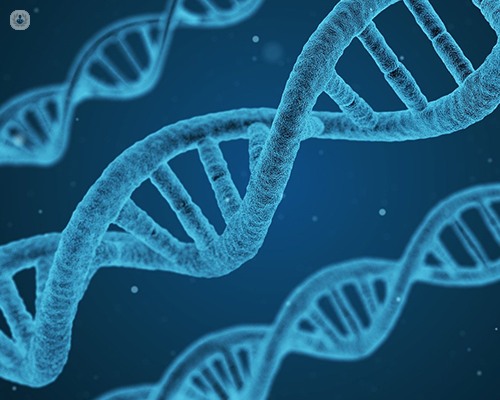Disorders of sex development
Mr William McAllister - Urology
Created on: 10-28-2020
Updated on: 02-12-2024
Edited by: Aoife Maguire
What are disorders of sex development?
Disorders of Sex Development (DSD), formerly known as intersex conditions, refer to a group of medical conditions where there is an atypical development of the reproductive or sexual anatomy. Individuals with DSD may have variations in chromosomal, gonadal, or anatomical sex features that differ from typical male or female development.

What are the signs and different types of disorders of sex development?
DSD can manifest in various ways, including differences in genitalia development, chromosomal abnormalities, and variations in hormone production or response. Some examples of DSD include:
Androgen insensitivity syndrome (AIS): Individuals with AIS have a genetic male (XY) pattern but are partially or completely insensitive to androgens (male hormones like testosterone). As a result, they may have a female appearance externally.
Congenital adrenal hyperplasia (CAH): CAH is a group of genetic disorders that affect the adrenal glands, leading to an overproduction of androgens. This can result in atypical genitalia development in females.
Turner syndrome: In Turner syndrome, individuals have only one normal X chromosome (XO) instead of the usual two (XX) in females. This can lead to various physical and developmental differences.
Klinefelter syndrome: Individuals with Klinefelter syndrome have an extra X chromosome (XXY) in males. This can result in physical and developmental differences, such as infertility and reduced testosterone production.
XX male syndrome: In this condition, individuals with a male phenotype have two X chromosomes (XX) instead of the typical XY pattern.
How can disorders of sex development be managed?
It is important to note that DSD is a diverse and complex category, and the experiences of individuals with DSD can vary widely. The management and treatment of DSD often involve a multidisciplinary approach, including medical ,psychological, and social support.
Disorders of Sex Development (DSD) can be managed through various approaches, depending on the specific condition and individual needs. Management strategies include:
Medical Evaluation: Thorough medical assessments, including genetic and hormonal testing, help diagnose and understand the specific DSD.
Psychological Support: Counselling and psychosocial support are essential for individuals and families to address emotional challenges and promote well-being.
Surgical Interventions: Depending on the severity and nature of anatomical differences, surgeries may be considered to improve functionality or appearance.
Hormone Replacement Therapy (HRT): HRT is used to achieve hormonal balance and develop secondary sexual characteristics consistent with gender identity.
Fertility Considerations: Fertility options, such as assisted reproductive technologies, may be explored based on the individual's reproductive goals.
Education and Support: Providing information and support for individuals and families helps them understand and cope with the condition.
Gender-Affirming Care: For those with gender identity concerns, gender-affirming care may include psychological support, social transition, or hormone therapy.
Regular Follow-Up: Ongoing monitoring and follow-up with healthcare providers ensure comprehensive care and adjustment of interventions as needed.
Management plans are individualised, respecting personal preferences and autonomy. Informed consent and ethical considerations guide decision-making throughout the process.
Collaborative efforts among healthcare professionals, advocacy groups and healthcare professionals are crucial, and work to raise awareness and provide support for individuals with DSD and their families. Additionally, there is ongoing discussion about the language used to describe these conditions, and some people prefer terms like "variations in sex development" to avoid stigmatisation.
